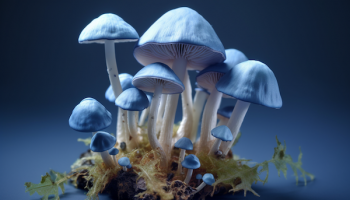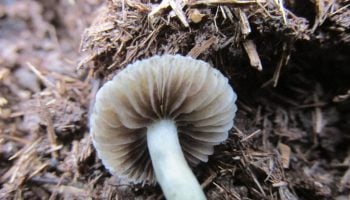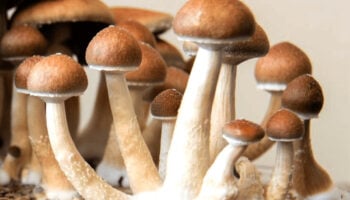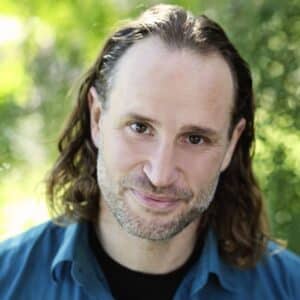If the early clinical studies are to be believed, psychedelic-assisted therapy may just be the most powerful and long-lasting treatment for depression that we have ever known. But that’s not all. Recent research from the Beckley/Imperial Research Programme suggests that it is achieving this result by having an effect in the brain that is the opposite of conventional antidepressants. This effect may seem paradoxical at first, but in reality it’s only reaffirming a core tenet of much psychotherapy: to come to terms with negative emotions, we must face them head on, not turn away.
The psychedelic treatment
As you may remember, in 2016, the Beckley/Imperial psychedelic research team assembled a group of participants who were experiencing treatment-resistant depression: that is, depression that had failed to improve from at least three previous courses of antidepressants.
This group was given a course of psychedelic-assisted therapy, which consisted of two sessions in which they took psilocybin and lay down with their eyes closed for six hours. A therapist was present to supervise but didn’t interact with them during this experience, although they did receive therapy before and afterward to help them prepare and process the experience.
The treatment worked. Fast. Just one week after the short course was over, patients had shown improvement greater than the average response to antidepressants (remember, these were patients who had already not responded to several antidepressants). And the effects lasted. The most recent follow-up shows that even six months after the course, with no further treatment, patients were significantly less depressed than they had been before the therapy, and many of them still considered themselves to be no longer depressed.
This is an incredible result; some critics have argued that it’s just too powerful and long-lasting to be believed. How can just two doses of a drug be more effective, faster-acting, and lead to a longer improvement than antidepressants – which have to be taken daily, take weeks to kick in, and even then fail to lead to a substantial improvement in many patients? The answer to these questions may come from the team’s recently published brain-imaging data.
Curious about supporting your mental health through psychedelics? Check out Third Wave’s vetted directory of psychedelic therapists who can hold space for your journey.
Psilocybin in the brain
During the course of psychedelic-assisted therapy, the research team put the participants into an MRI scanner twice: once a week before therapy began, and once the day after the second psilocybin session. There, participants were shown a series of faces, each with happy, neutral, or fearful expressions. The team was looking for changes in the activity of the amygdala, a small almond-shaped structure found deep within the brain that is involved in processing fear and anxiety.
The amygdala lights up in response to fearful expressions. In this study, this characteristic response of the amygdala to fearful faces grew stronger after the psilocybin session. This means that psilocybin actually seemed to enhance, one day later, the brain’s processing of negative emotional stimuli.
This turns received wisdom about treating depression on its head. Past research showed that clinically depressed patients have “amygdala hypersensitivity”; this part of their brain shows a constant heightened activity, and goes haywire in response to negative emotional input. This observation has been linked with the tendency of depressed patients to notice and respond to negative events more strongly than healthy individuals. Accordingly, treatment with conventional antidepressants has been shown to reduce this overactivity of the amygdala.
Researchers have come to the not-unreasonable conclusion that this ability to blunt negative emotions is an important component of how antidepressants work. After all, the clue’s in the name: antidepressant. Clinical research into new antidepressants takes a broadly similar tack, looking for medications that will diminish or eliminate the negative feelings and thoughts experienced by depressed patients.
Against this backdrop, psilocybin is a complete anomaly; a substance that not only seems to have achieved more powerful and long-lasting effects than antidepressants but which has done so by causing the exact reverse effect on brain activity.
And just to eliminate any doubt about the implications of their findings, these researchers make one final striking observation: the strength of this increased amygdala response correlated to greater improvement. In other words, the effect of psilocybin on the amygdala isn’t some bizarre anomaly or side effect. Psychedelic-assisted therapy must be achieving its extraordinary results through a mechanism that involves enhancing emotional responsiveness of all kinds – even negative or unpleasant types.
If you want to find out more about the topic check out our podcast interview with Danny Motyka where we talk about Chemistry, Biosynthetics, and the Promise of Novel Psychedelic Medicines or Click here to read the transcript
The paradoxical power of psychedelic-assisted therapy
But how can therapy for depression succeed by making potentially painful negative emotions more intense? This sounds counterintuitive, but it is in fact an old idea that we find at the heart of some forms of psychotherapy to this day. Psychoanalysis, CBT, and other forms of talking therapy declare, in different ways, that the best way to overcome negative emotions is not to repress or blunt them, but to confront and challenge them. This can make the therapeutic experience itself painful, but is the only way, many psychotherapists would maintain, to achieve a real and lasting benefit.
This confrontation may be what psychedelic-assisted therapy enables us to achieve, more rapidly and reliably than conventional talking therapy. The psychedelic experience is more than just pretty hallucinations; feelings and emotions are intensified, and memories often recalled with startling clarity. Given proper preparation and therapeutic support, psychedelics may provide the ideal mental conditions for the vivid introspection and self-analysis that much psychotherapy demands.
Instead of blocking out painful memories, psychedelics reawaken them. Instead of repressing recurring negative emotions, psychedelics intensify them. But in doing so, psychedelics create the ideal therapeutic window through which the patient can achieve real and lasting change.
We see these ideas expressed in the reports of the participants in the study. Many of these patients said that they attributed the effectiveness of the treatment to “a greater willingness to accept all emotions.” Many went so far as to say that they felt previous depression treatments had served only to “reinforce emotional avoidance and disconnection.”
The psilocybin experience itself, by contrast, had precipitated an emotional “confrontation”: a challenging return to old traumas that had led to “emotional breakthrough and resolution.” The therapeutic process was by no means easy or pleasant, but was nevertheless felt to have been pivotal to achieving a therapeutic transformation. These patients’ perspectives are supported by previous research demonstrating that the difficulty of a psychedelic therapy experience is in fact predictive of a better long-term result. This seemingly paradoxical finding echoes the approach of much traditional talking therapy.
Two roads to recovery
Psychedelic-assisted therapy and conventional antidepressants offer two radically different pathways to overcoming depression. Conventional antidepressants blunt negative thoughts and feelings, enabling the patient to continue functioning. Psilocybin puts the patient back in touch with those same feelings, enabling them to be explored over the course of the session, and then ultimately put aside for good. But do both these roads lead to the same destination?
In answer to this, we can turn to evidence from patients using antidepressants in the long term. Emotional blunting has been found to extend not just to negative emotions, but to positive ones too. Antidepressants don’t discriminate between the low and the high points of the emotional rollercoaster; they flatten everything without prejudice. For patients battling with extreme depression, this may be a price worth paying, but it is still a high one.
What’s more, many experiences of depression aren’t defined by extremely negative thoughts, but by a general loss of interest in life (apathy), lack of enjoyment of physical experience (anhedonia), and a lack of willpower or drive (avolition). Antidepressants that work by simply muting emotion can’t help these patients. Perhaps this is why millions of patients report that no antidepressant seems to help them; or worse, that it turns them into a “zombie” with even less engagement or attachment to the world.
We shouldn’t be surprised. It’s an open secret that antidepressants are suboptimal treatments in the long term; they require daily use, without which the patient returns to baseline or worse. It’s an arrangement that benefits pharmaceutical companies far more than it benefits patients.
In a mental health landscape dominated by antidepressants, it is easy to forget that they were never intended to be long-term treatments for depression. They were seen as only a “quick fix” that enabled patients to function while long-term therapy was underway. But, slowly and insidiously, they have risen to become the beginning and end of frontline mental health care, prescribed as a lifetime sentence not just for depression, but for a constellation of other mental health conditions as well.
The triumphant return of psychedelic therapy to medical research means the return of another paradigm – one that doesn’t abandon all hope of long-term meaningful change without continued reliance on pharmaceuticals. It’s a paradigm that gives patients the tools to confront and come to terms with their emotional pain, rather than simply numbing it indefinitely.
Psychedelic-assisted therapy isn’t paradoxical. Antidepressants are.
If you’re interested in learning how psychedelics can help you get in touch with your emotions and start to heal, but aren’t ready for a full-scale macrodose journey, take a look at our Microdosing Course. Using the latest research from cutting-edge scientists and doctors, we’ll help you develop a customized, step-by-step process to change habits, enhance creativity, and optimize performance.







It is compelling to read all the recent scientific publications about the subject. After the body of evidence has been made robust, the biggest challenge will be to create social awareness on the positive effects of supervised psychedelic experiences. It will take a while until public opinion changes. But in the wake of changing laws about therapeutic cannabis use, maybe it won’t take so long. By the way, I have had first hand experience on the therapeutic potential of psilocybin as I consumed it with the goal of addressing my smoking habit. It has been 4 months and I can’t even stand the smell.
This kind of awareness is very good and would benefit a lot of people in the long run.
I hope that this will progress and improve people’s lives. Thank you for sharing!
I always talked about the medical benefits of psychedelic. Thank you for sharing
Thank you for sharing and spreading awareness! Mushrooms are really indeed a magical fungus. As studies progress, it unfolds a lot of possible uses and applications in science and medicine. I hope this could be the future treatment of a lot of diseases. It has endless capabilities!
I would like to begin microdosing. I just need help in finding where I can buy the best form of psilocybin. Any guidance will help.